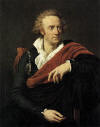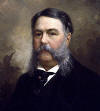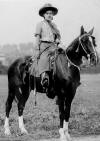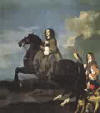Once they were famous from the Atlantic to the Pacific. If you had asked any American school children in 1911 who Bud and Temple Abernathy were, they would have given you a look of disbelief. “Everyone knows the Abernathy Boys,” they would have said. And they would have been correct, because the mounted adventures of the little Long Riders from Oklahoma Territory had taken the United States by storm. On their first equestrian journey in 1909 the tiny travellers, aged nine and five, encountered a host of Old West obstacles, including wolves and wild rivers, when they rode more than 1,000 miles from Oklahoma to Santa Fe and back – ALONE! The following year the intrepid brothers set their sights on New York City, which they reached after a month of hard riding. Along the way Orville Wright offered to take them up in his new-fangled airplane and President Taft gave them a warm welcome when they reached the White House. Kids envied them. Women adored them. Grown men pulled hair from their horses’ tails to keep as souvenirs. This public frenzy culminated when Bud and Temple rode their Oklahoma ponies alongside Teddy Roosevelt and the Rough Riders in a victory parade witnessed by more than a million cheering New Yorkers. Even though they were only six and ten years old, Temple and Bud Abernathy were a national sensation. In the summer of 1911, they did the impossible. They rode nearly 4,000 miles, from New York to San Francisco, in only sixty-two days. Once again, the Abernathy Boys had made a historic ride without any adult assistance and accomplished an equestrian feat which has never been equalled. Their remarkable story entitled, Ride the Wind was penned by a member of their family in 1910.


Count Vittorio Alfieri was an Italian aristocrat who had three passions in life – liberty, literature and horses. A fiery believer in personal freedom, Alfieri often ran afoul of Europe’s most powerful leaders. One of his earliest journeys took him to Prussia and Russia.
Never one to hold his tongue, Alfieri snubbed Frederick the Great as a military tyrant who he "despised" to his face. “I thanked Heaven I had not been born his slave.”
Nor did the Italian Long Rider fear to express his contempt towards Russia’s despotic female ruler, Catherine the Great. He announced to the court at St. Petersburg that he had no desire to be presented to the "despotic" Czarina because of his "heartfelt hatred of tyranny."
It was after Alfieri returned from Russia that he made his first equestrian journey through southern England in 1769. He followed that journey by purchasing two beautiful horses at Spa and then rode to Liege, Brussels, Antwerp and The Hague.
By 1772 Alfieri’s interest had turned to Spain and Portugal. He purchased two horses, an Andalusian and a Cordovese, in Barcelona then rode to Madrid, Lisbon, Seville and Cadiz, before ending his journey at the French border. There he was faced with the problem of how to safe-guard the future of his beloved horses.
“Without horses I am never half myself,” he wrote. This explains why he wrote, “I abhor trafficking in horses.”
He gave the Cordovese away to the young daughter of his hostess and presented the beautiful Andalusian as a gift to a Spanish friend.
Having learned to enjoy equestrian travel the fiery poet decided to undertake his most ambitious journey. This time he determined to bring back a drove of fourteen of the finest English horses to his ancestral home in Florence, Italy. The nine-month journey required him to hire help along the way and forced him to ride over the Alps.
He wrote in his autobiography, "I am under way again, and during this journey am opening myself up to poetic inspiration more than ever. My heart is filled with joy.”
But the journey was also filled with challenges and hardships.
“It is vastly easier to write about that trip than it was to make it. I encountered every day perplexities and vexations which embittered the pleasure I should otherwise have had. One horse wouldn't eat. Another had gone lame. It was a continual sea of troubles and I had to bear it all.”
Yet he eventually brought all of the horses safely to Florence.
By 1799 Alfieri was considered one of Europe’s most influential literary figures. He was working on his autobiography when troops from the revolutionary army of France, led by the young General Napoleon Bonaparte, invaded Florence. In a final dangerous act of political defiance, Alfieri carried on with his literary work and refused to grant Napoleon an audience or acknowledge the presence of the occupying French troops.
“I had never concealed my odium or contempt for these unmannerly slaves, and I expected from them all kinds of violence and insolence.”
Having witnessed political oppression in so many countries, Alfieri had the wisdom to comment on mankind’s on-going allegiance to ignorance.
“Except for my solitary walks, I continued my literary labours with the utmost intensity. Just because manners change, man, whether he be in the year 1500, 1800 or 2000 will stay much the same. I, who have never courted aught but the truth remain undeceived by things of the world. Being prudent in my manner of life, and spending nothing but on books, I found myself quite rich.”
In his autobiography Count Alfieri, that champion of liberty and Long Riding, summarized his existence by saying, “I remain bent upon living and dying a free man.”


President Chester Arthur – Though he is normally remembered as being the twenty-first President of the United States, Chester A. Arthur was also a Historical Long Rider who made a unique American equestrian journey. The son of Irish immigrants, Arthur turned a thriving law practice into a political career that resulted in him being elected Vice President in 1880.
When President James Garfield was slain by an assassin in July, 1881, Vice-President Arthur was unexpectedly sworn in as the country’s leader. He served in this capacity until March, 1885. To the chagrin of corrupt politicians, the new president insisted on political honesty. He required that certain vital government positions be obtainable only through competitive written examinations and protected other employees against removal for political reasons.
Though he enjoyed a reputation as being one of the most society-conscious presidents, because of his style of dress and courtly manner, Arthur maintained another side to his life. Despite the responsibilities of his office, the president was an avid fisherman and hunter who enjoyed spending time away from the political pressures of Washington DC. It was this longing for nature that prompted the portly president to become a Historical Long Rider. When the noted landscape painter, Albert Bierstadt, displayed his beautiful depiction of Yellowstone Falls in the White House, Arthur decided the time had come for him to visit this legendary part of the American kindgom.
The President proceeded by train with General Sheridan to Wyoming. Accompanied by an escort of cavalry, President Arthur proceeded to mount up and spend a month exploring Yellowstone by horseback. Many hundreds of miles later, the refreshed executive returned to the duties of his political office.
Soon after his term in office came to a conclusion, Arthur’s health failed. He died of a massive cerebral haemorrhage at the age of 57.
Though he had entered the White House unexpectedly, Chester Arthur enjoyed a lasting legacy as a trusted leader.
"No man ever entered the Presidency so profoundly and widely distrusted, and no one ever retired… more generally respected," one historian noted.
Yet of even more interest to The Guild was Arthur’s desire to ride horses, enjoy nature and preserve his privacy.
“I may be President of the United States but my private life is nobody’s damned business.”

Francis Asbury - Often described as the “Prophet of the Long Road,” Francis Asbury’s life is a unprecedented mixture of equestrian travel and spiritual devotion.
The future Long Rider grew up near Birmingham, England during a time of immense social and religious turmoil. Asbury was raised in the relatively new Methodist faith whose advocates, though routinely persecuted, nevertheless provided comfort to their fellow citizens suffering from the ravages of the new Industrial Revolution. Though he had been religiously persecuted and viciously attacked as a youngster, Asbury became a Methodist preacher at the age of eighteen.
By 1771, John Wesley, the founder of Methodism, announced that preachers were desperately needed in the American colonies. “Who will go,” Wesley challenged. Young Asbury immediately volunteered. When Asbury embarked for the New World on September 4, 1771, he wrote in his journal,” If God does not acknowledge me in America, I will soon return to England.”
He never saw England again.
Upon his arrival, Asbury was upset to discover that many ministers preferred to live amidst comfort. The young Spartan stated, "I am determined that no man shall bias me with soft words and fair speeches." Thereafter Asbury sought no ease while he preached. When the American War of Independence broke out in 1776, Asbury was the only Methodist minister to remain in America. Having retained his British citizenship, he feared that anyone who sheltered him would be denounced as an English spy. To protect his parishioners, he was often forced to hide in swamps, though he never stopped riding and preaching. Thanks to this extraordinary dedication, Wesley named Asbury as superintendent of the work in America. For the next thirty-two years the scholarly Long Rider led all the Methodists in America, during which time he preached in churches, courthouses, taverns, tobacco fields, public squares, wherever a crowd assembled to hear him.
What sets Asbury apart from his contemporaries is that he rode an average of 6000 miles a year. During his years in the saddle, Asbury crossed the Allegheny mountains sixty times and rode to Connecticut, Delaware, Georgia, Kentucky, Maine, Maryland, Massachusetts, New Hampshire, New Jersey, New York, North Carolina, Ohio, Pennsylvania, Rhode Island, South Carolina, Tennessee, Vermont, Virginia and Canada. After decades of hard riding through every type of harsh weather, the aged preacher suffered from rheumatism. During the last two years of his life, his feet were too swollen to fit into the stirrups and he had to be lifted into the saddle. Yet under his direction, the church had grown from 1,200 to 214,000 members and 700 ordained preachers were practicing in the newly liberated colonies. Like his contemporary, the English Long Rider Thomas Clarkson, who rode an estimated 35,000 miles throughout Great Britain, all the while lecturing on the evils of slavery, Asbury defended the civil and religious rights of mankind. Among the men he ordained was Richard Allen, the first black minister in the United States.
An equestrian statue of Asbury was erected in Washington, D.C. in 1921. It commemorates the estimated 275,000 miles he rode during his astonishing forty-four years of mounted preaching.

Could a woman ride from the Pacific to the Atlantic alone? the showmen argued. Nan set off in September 1910 to prove it was possible. Mounted on her thoroughbred, Lady Ellen, the lady Long Rider carried a letter from San Francisco Mayor McCarthy addressed to his colleague, Mayor Gaynor in New York. During the course of the journey, Nan refused to allow anyone else to care for Lady Ellen, even to the point of shoeing the horse herself fourteen times.
After months on the road, Two-Gun Nan and Lady Ellen arrived in New York on July 13th, 1911. According to newspaper reports at the time, the hardy equestrian traveller was awarded a diamond medal for endurance by Richard K. Fox, the long-time publisher of The National Police Gazette. In an amazing historical aside, the story of Nan's medal was later plagiarized by the notorious equestrian travel charlatan, Frank Hopkins, whose story was recently made into the fictitious movie, "Hidalgo."
Although researchers have spent years trying to find information about this amazing Long Rider, her story was only uncovered thanks to the diligent academic research of Mary C. Higginbotham. For decades, equestrian researchers had fruitlessly searched for clues to the ride and life of Nan Aspinwall. Mary discovered that Nan's work as an entertainer and traveller was undertaken under her married name of Nan Gable.
The Long Riders' Guild is proud to announce the publication of the story of Two-Gun Nan entitled "In Genuine Cowgirl Fashion." This book contains all of Mary Higginbotham's unique research and will be amply illustrated with never-before-seen photographs of Nan in the saddle and on the stage.
Click here to read a beautiful poem about Two-Gun Nan written by the famous cowboy poet and Friend of The Guild, TJ Casey.
And please click here to read a letter from the National Cowgirl Museum and Hall of Fame, in acknowledgement of The Guild's nomination of Nan to be inducted into the Hall of Fame.

